The ex GWR ‘B’ Set - Continued
My last Post discussed the merits of various proprietary couplings that could be used to close the gap between two B Set Brake Composites. Sometimes the solution is so obvious that it gets overlooked. I should thank Nergle for his comment and for pointing me the in right direction.
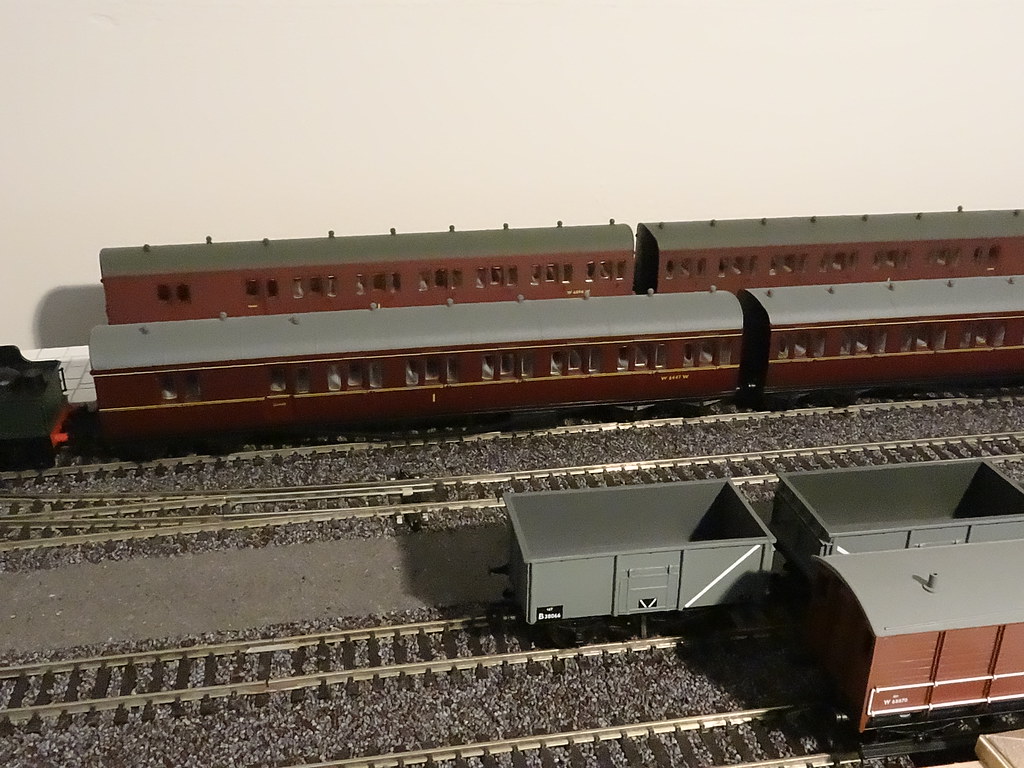
Close Coupled B Sets, Airfix back, Mainline front
A search of the Internet points to an old blog from Tim Venton currently with a work bench thread on the Scale Four web site. The picture montage below is from Tim's old Blog and shows two types of semi permanent ‘bar’ couplings that were used on some of the prototype coaches.
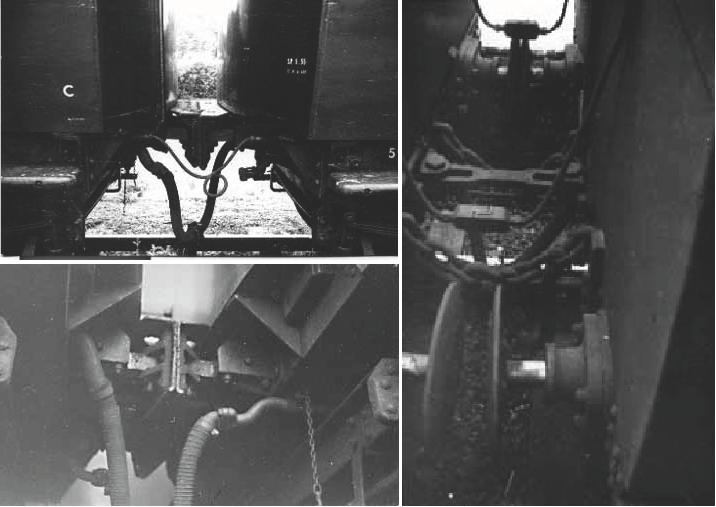
B Set Inner Bar Couplings, Diagram E129 left, Diagram E147, coaches No W6907W + W6908W right, courtesy of Tim Venton
If a simple bar was good enough for coupling the prototype why not for the model?

29 mm x 5mm strip cut from translucent vinyl divider
What to use? I settled on some thick plastic / vinyl film that I could cut with a craft knife.
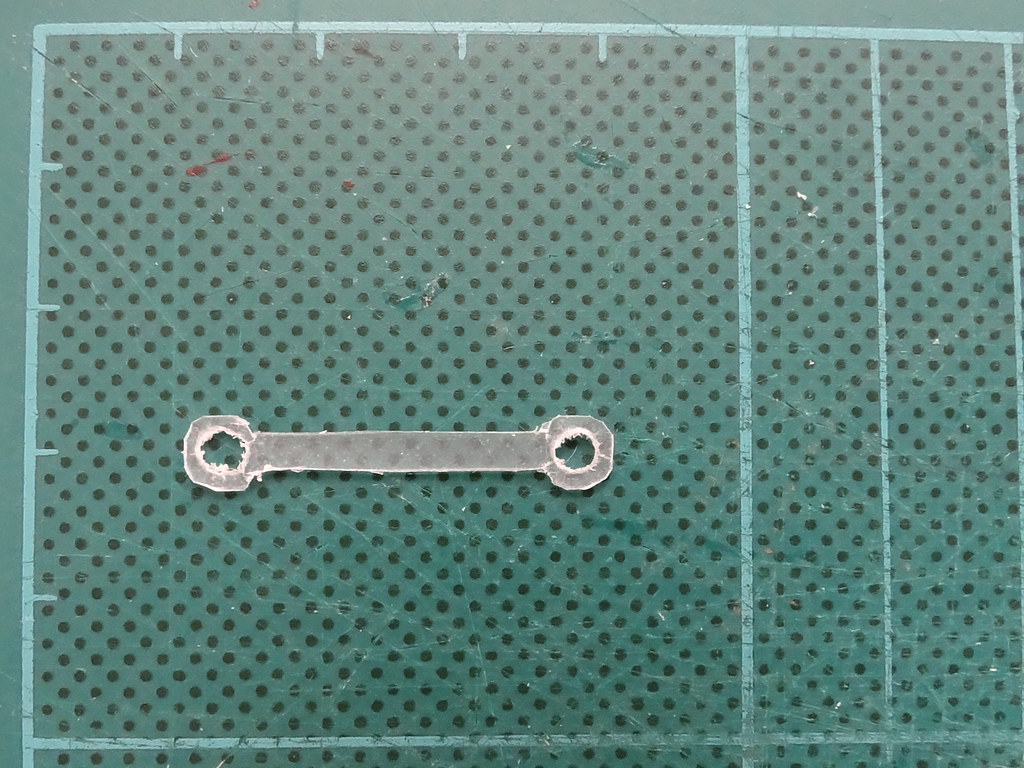
Coupling bar cut to shape, 1/8 inch diameter holes at 24mm centres
In order to safely traverse Peco Medium, Radius Points I arrived at a diameter of 1/8 inch for the fixing holes and a spacing of 24mm.
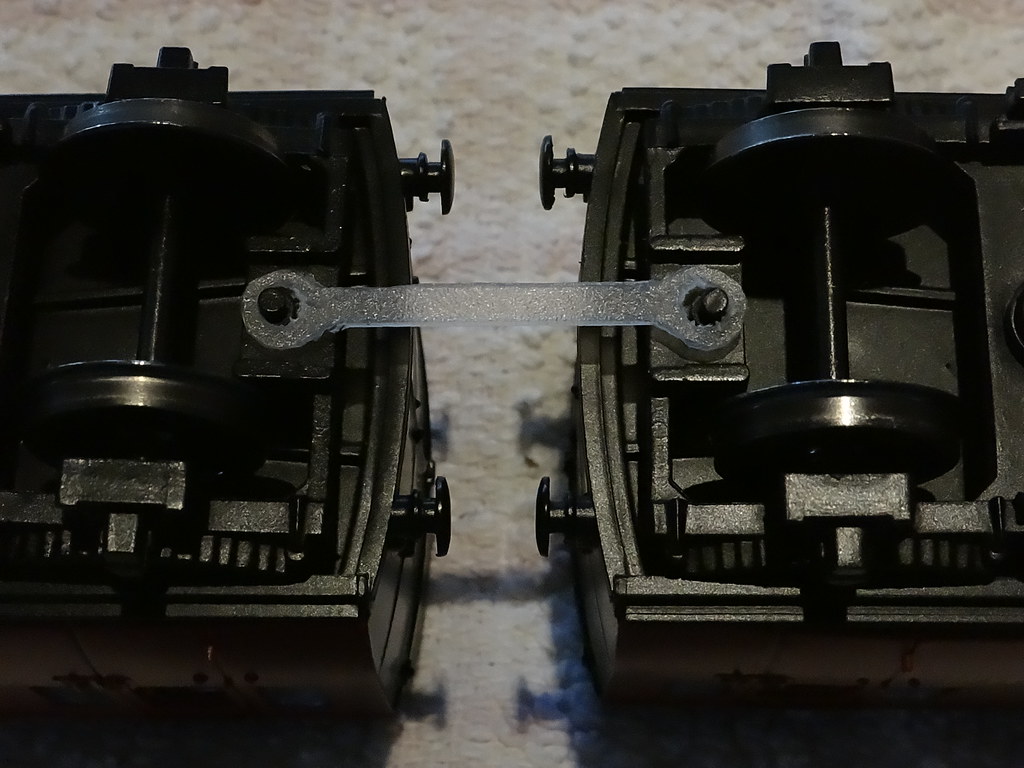
Keeper plates removed and bar placed over couplings pegs
The peg used to centre the Proprietary coupling has a diameter close to 3/32 inch but opening the holes out in the coupling bar to 1/8 inch provides a little extra tolerance if you have slipped when marking out the centres (or if the coach buffers are slightly protruding).
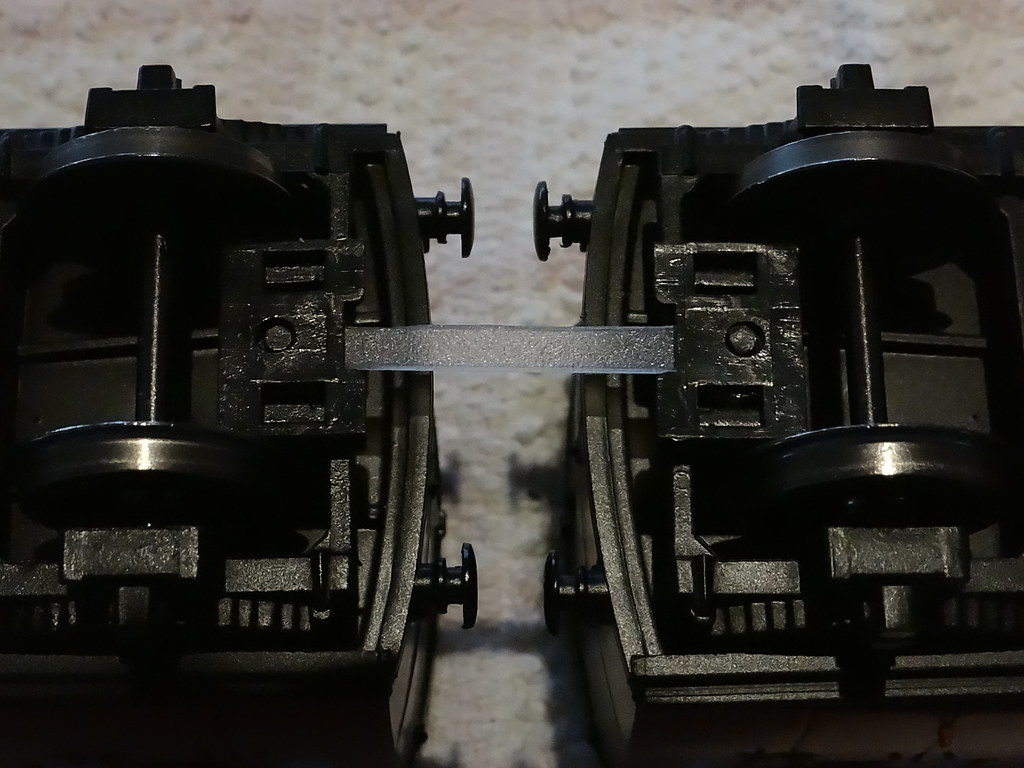
Ready for testing
All that remained was for the bars to be given a coat of black paint.
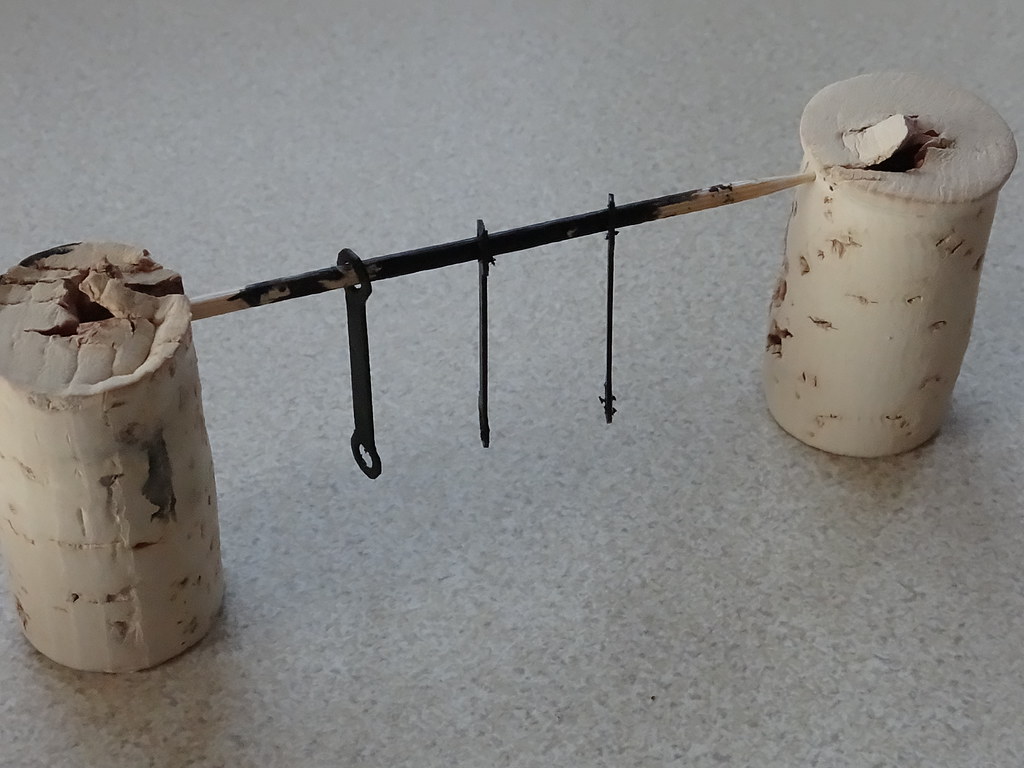
Painting
By a process of trial and error I deduced that the location on my layout with the tightest radius was where I had two Peco Medium Radius Left and Right points joined at the toe. The view below shows the buffer spacing at this location.

The proof of the pudding
As further proof I have loaded
Whilst searching for details for the prototype coaches I came across the official ‘British Railways’ image shown below.
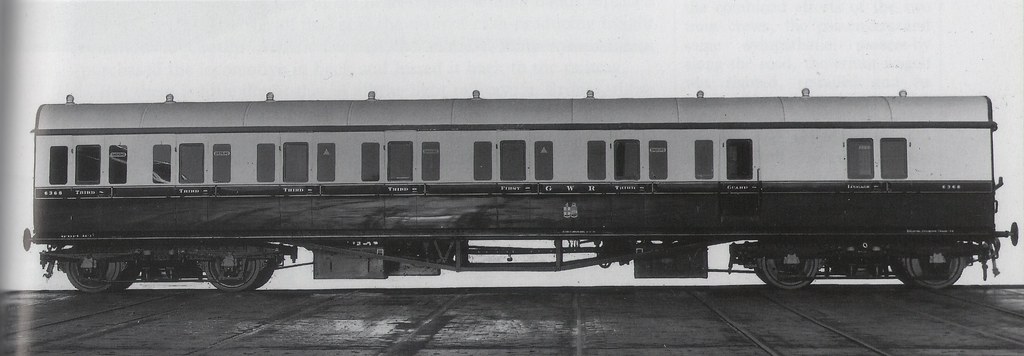
Official British Railways – Great Western Railway B Set image 1920 / 1930
The official images shows the brake composite fitted with short buffers on the inner end and long buffers at the outer end.
I also noted that there was only one First Class compartment, as modelled by Airfix and Mainline. Is the Hornby model with its two First Class compartments correct?
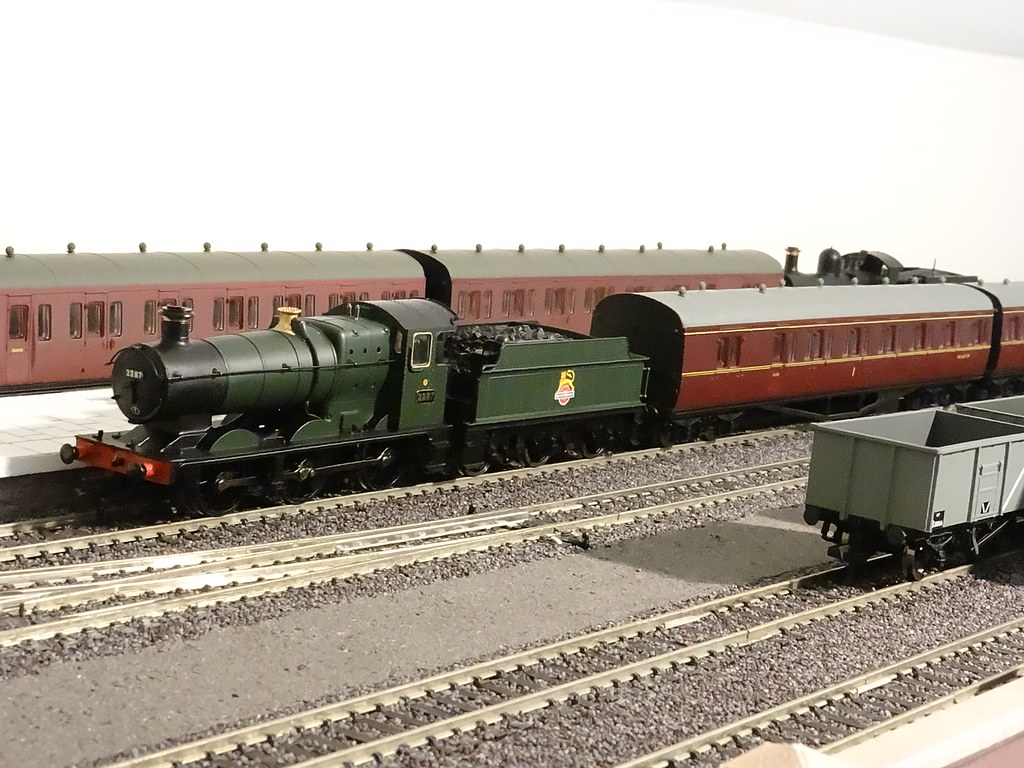
Another view of two completed sets, Mainline to the front, Airfix at the back
Finally another shot of two completed rakes. I am not too sure about the authenticity of a green early emblem locomotive and lined maroon coaches!
-
 11
11


.thumb.jpg.60c53fcbcaa34017b05b8919d1a9e6d2.jpg)

10 Comments
Recommended Comments
Create an account or sign in to comment
You need to be a member in order to leave a comment
Create an account
Sign up for a new account in our community. It's easy!
Register a new accountSign in
Already have an account? Sign in here.
Sign In Now